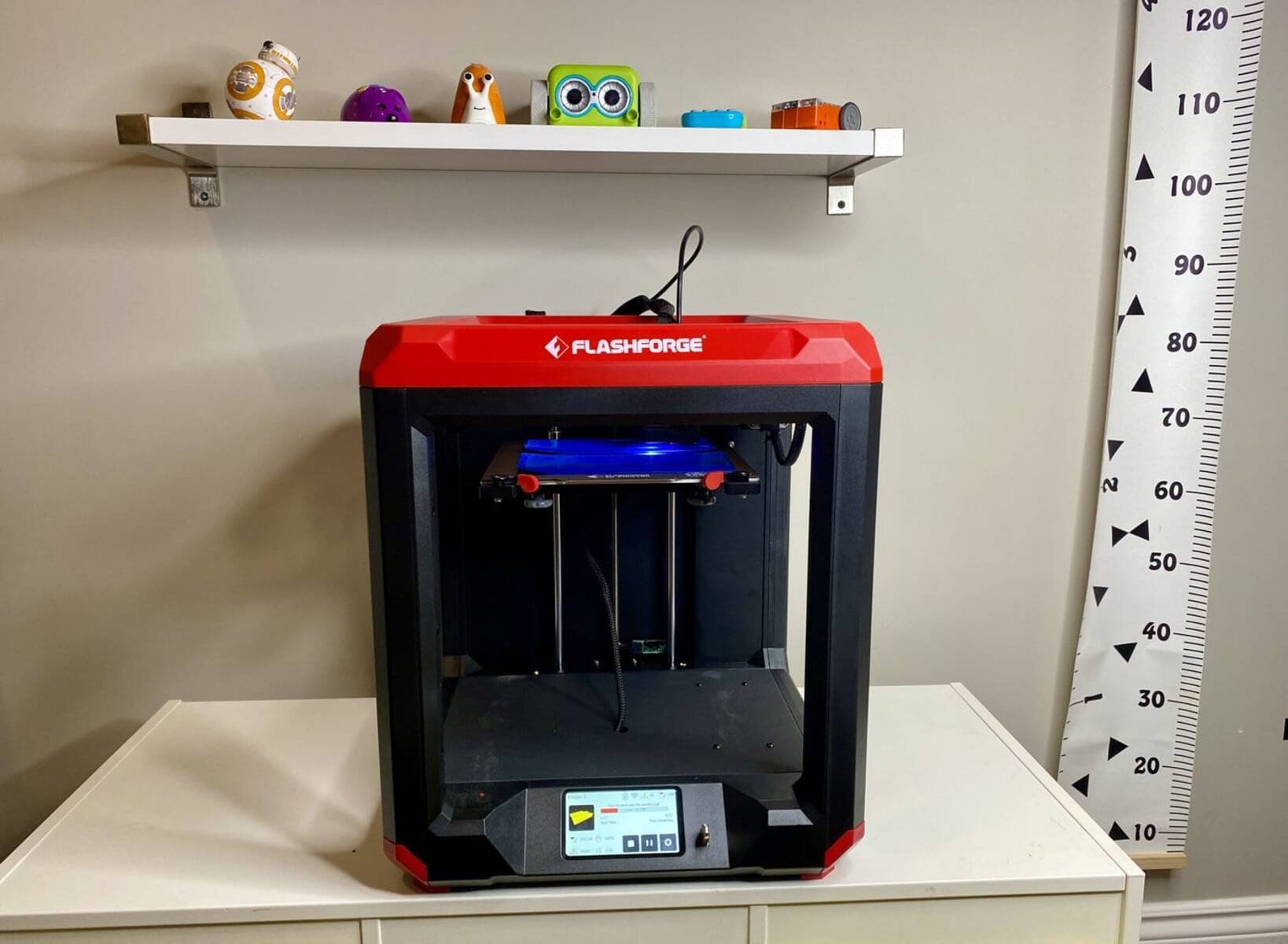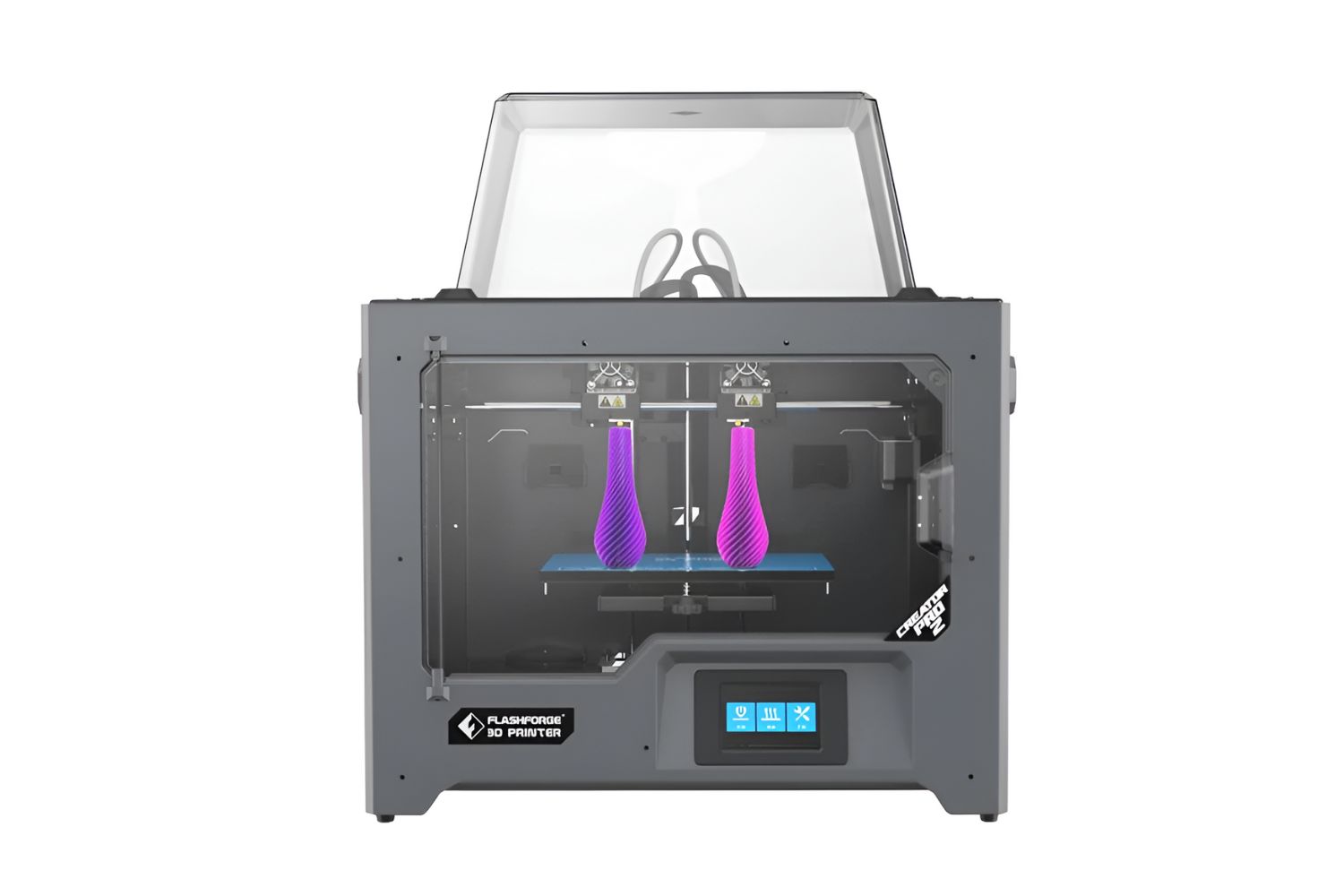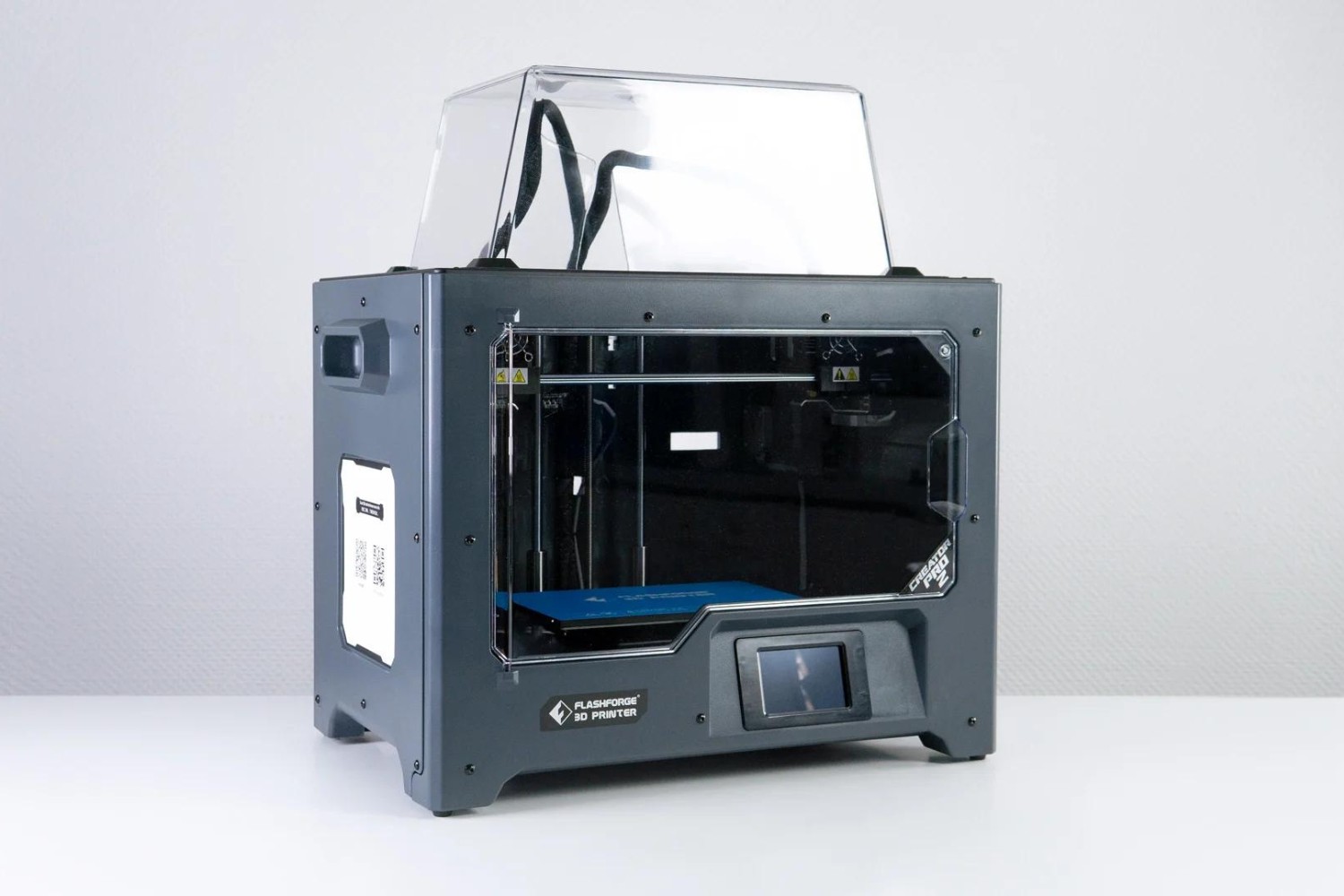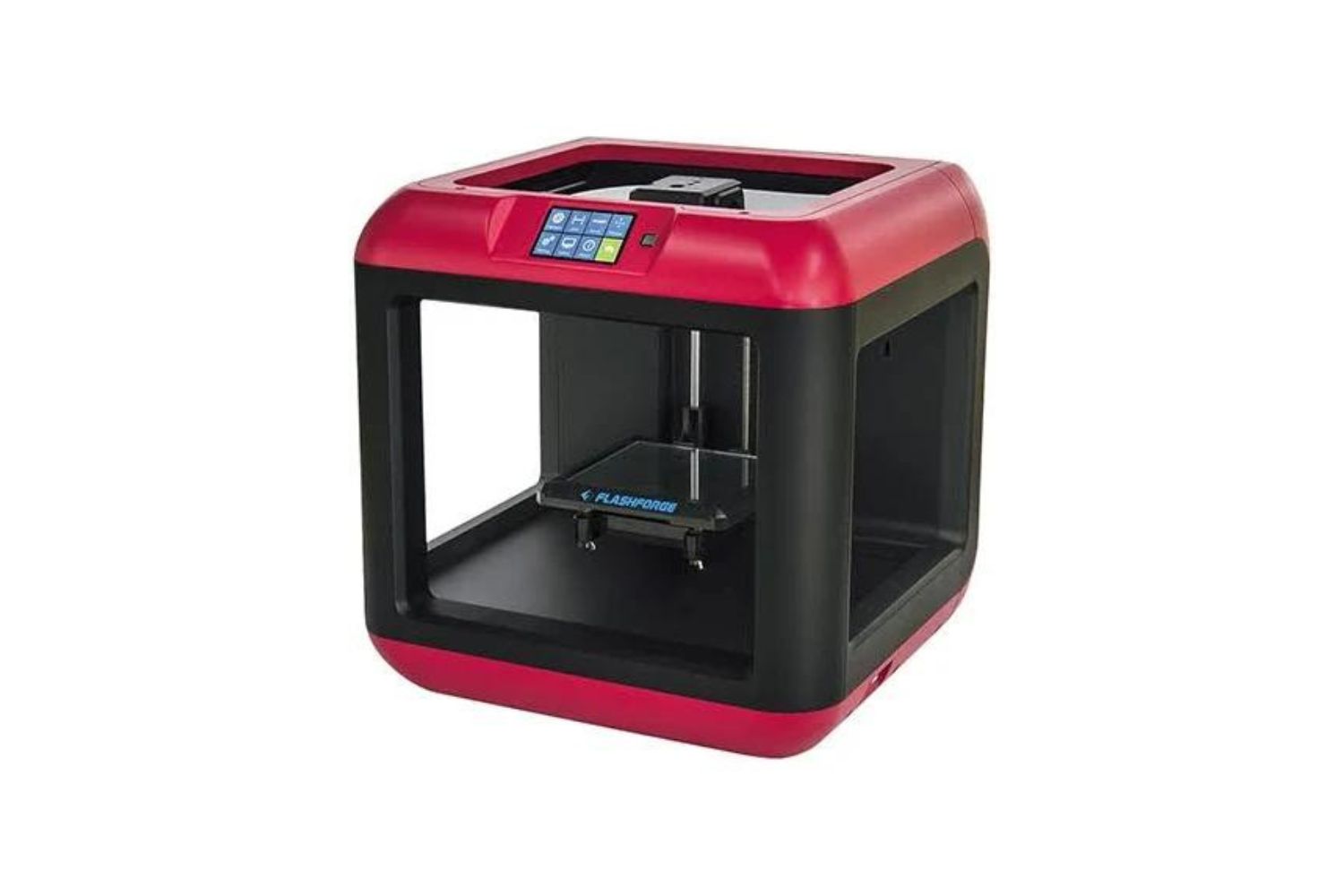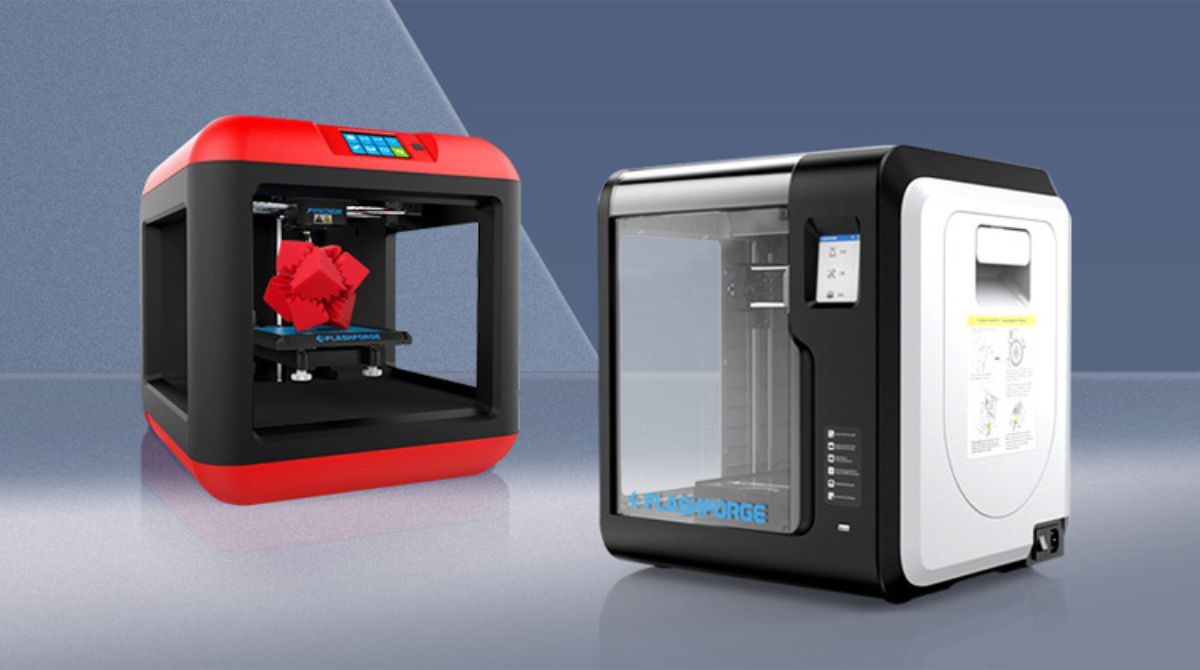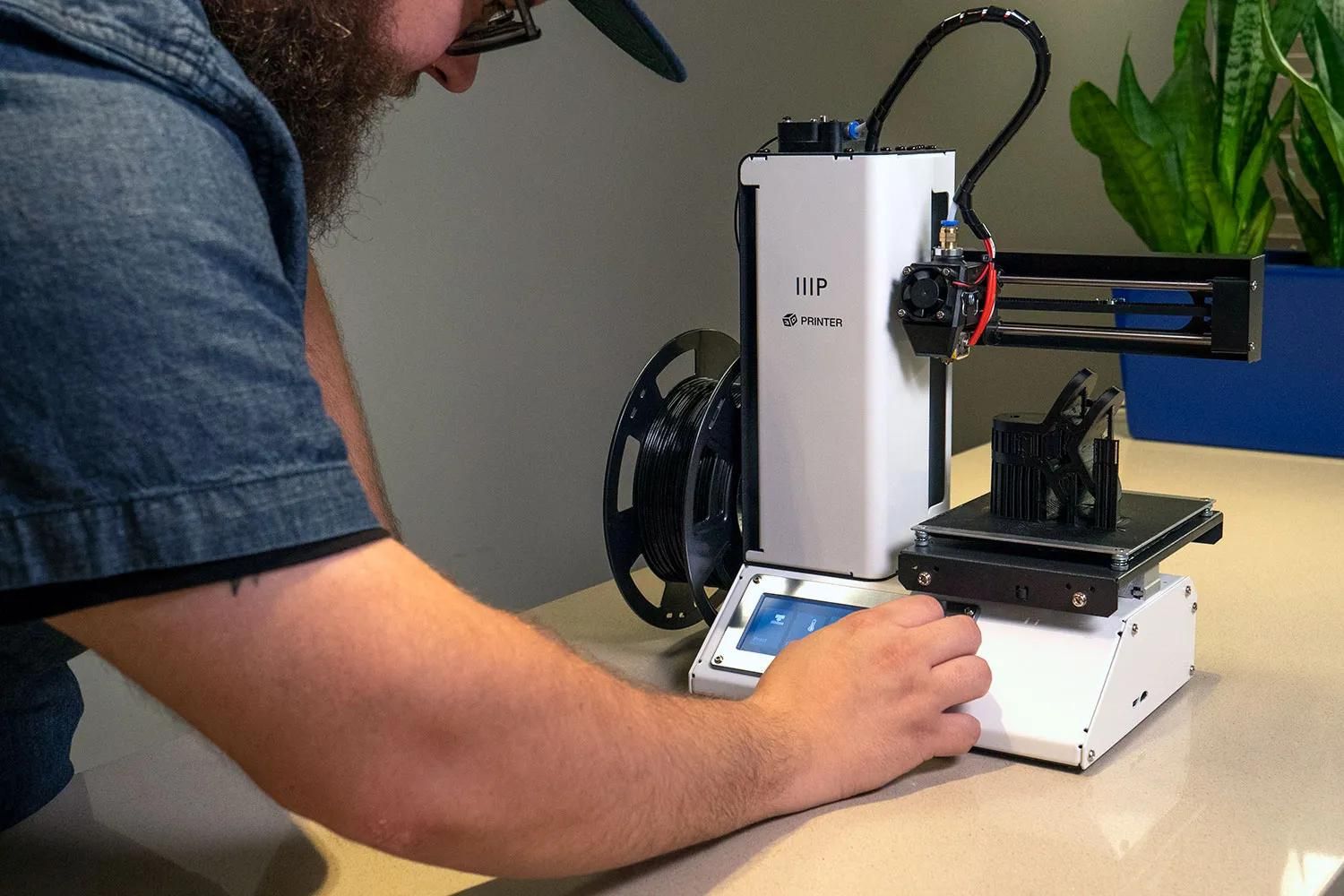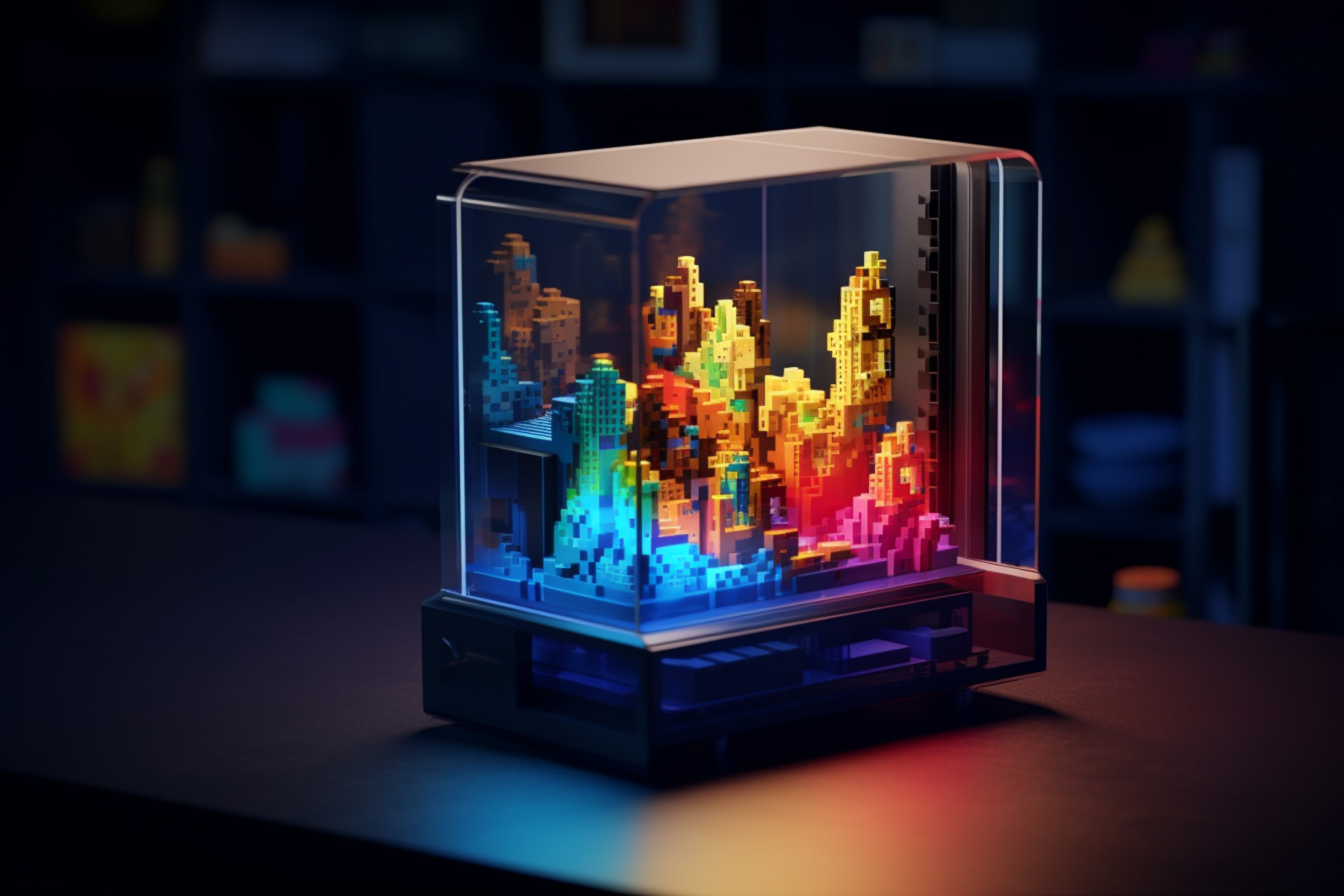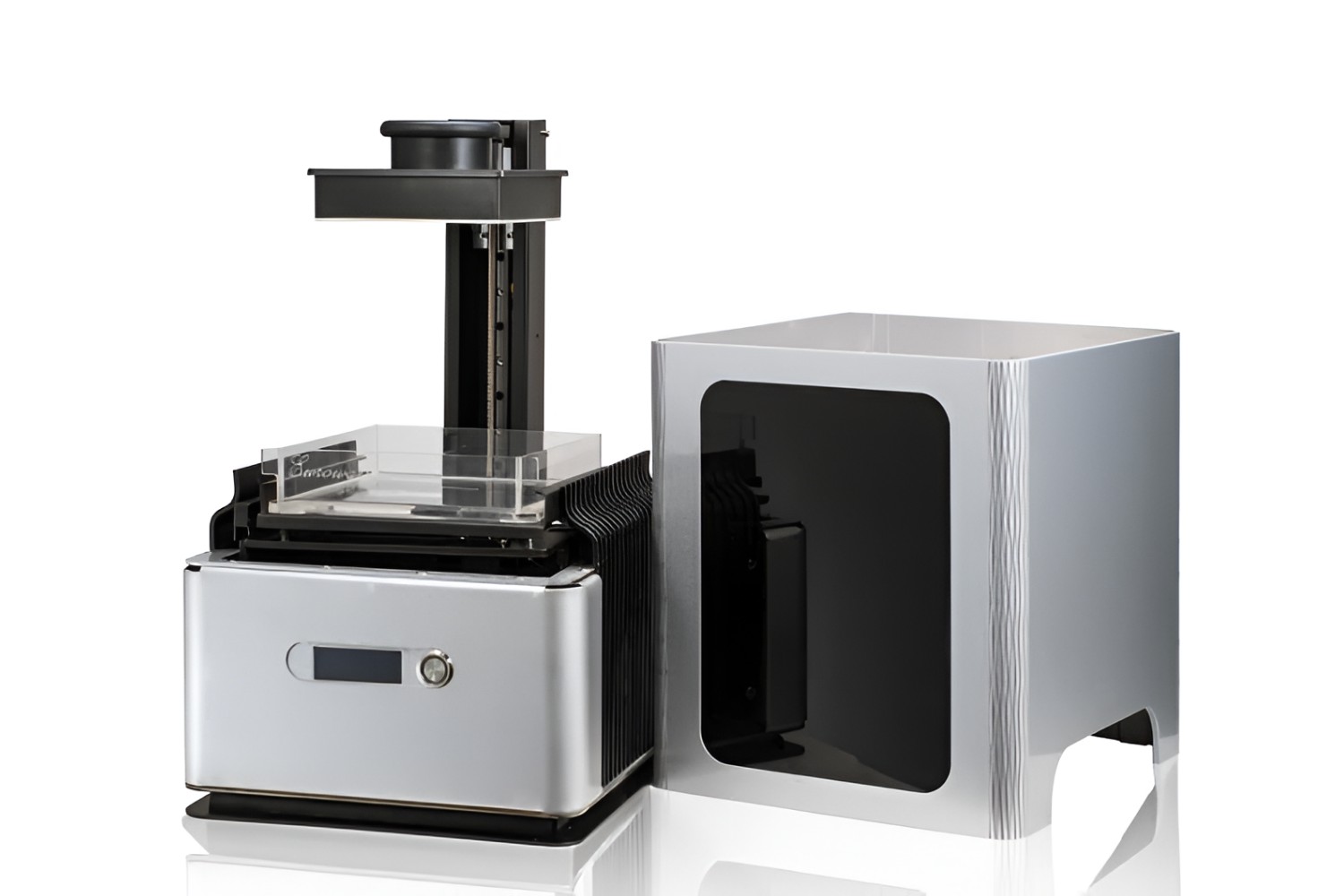Introduction
Welcome to our guide on how to use Flash Forge on a 3D printer. With the advancements in technology, 3D printing has become increasingly popular and accessible. One of the key elements in achieving high-quality prints is utilizing the right slicing software, such as Flash Forge.
Flash Forge is a powerful and versatile slicing software that allows users to prepare 3D models for printing. It provides a wide range of features and settings to optimize the printing process and ensure the best results. Whether you’re a beginner or an experienced user, Flash Forge offers intuitive tools and a user-friendly interface to streamline your 3D printing workflow.
In this guide, we will explore the benefits of using Flash Forge on a 3D printer and provide a step-by-step tutorial on how to set up and use Flash Forge effectively. We will cover everything from loading and changing filament to adjusting print settings and troubleshooting common issues.
By the end of this guide, you will have a solid understanding of how to utilize Flash Forge to enhance your 3D printing experience. So, let’s dive in and discover the possibilities that Flash Forge brings to your 3D printing journey.
What is Flash Forge?
Flash Forge is a powerful and feature-rich slicing software specifically designed for 3D printers. It serves as a bridge between your 3D model and the actual printing process. This software takes your digital 3D model and converts it into a series of instructions that the 3D printer can understand and execute.
Flash Forge offers a wide array of capabilities to optimize your 3D printing workflow. It allows you to set up and adjust printer settings, such as print speed, layer height, infill density, and support structures, to achieve the desired print quality. Additionally, it provides advanced options for expert users who want to fine-tune their prints.
One of the standout features of Flash Forge is its intuitive user interface. The software’s clean and organized layout makes it easy to navigate and locate the various settings. Whether you’re a novice or an experienced user, Flash Forge simplifies the 3D printing preparation process, ensuring a seamless and hassle-free experience.
Flash Forge supports a wide range of popular 3D printer models, making it compatible with different hardware configurations. This versatility allows users to take advantage of Flash Forge’s features regardless of the specific printer they own. It offers compatibility with both FDM (Fused Deposition Modeling) and SLA (Stereolithography) 3D printers, making it a versatile choice for various printing technologies.
With its robust and reliable slicing algorithm, Flash Forge ensures that your 3D models are sliced accurately and efficiently. It optimizes the toolpaths to reduce unnecessary movements and minimize printing time, resulting in faster and more cost-effective prints. This can be particularly beneficial for large or complex models that require extensive print times.
Overall, Flash Forge is an indispensable tool for 3D printing enthusiasts and professionals alike. Its user-friendly interface, compatibility with different 3D printers, and advanced customization options make it a top choice for optimizing the printing process and achieving exceptional print quality.
Why use Flash Forge on a 3D printer?
There are several reasons why one should consider using Flash Forge as their slicing software of choice for their 3D printer. Let’s explore some of the key advantages it offers.
First and foremost, Flash Forge provides exceptional print quality. The software’s advanced algorithms ensure precise and accurate slicing, resulting in clean and detailed prints. It optimizes the toolpaths to minimize artifacts, such as stringing or warping, and produces smooth surfaces and sharp edges. With Flash Forge, you can achieve professional-level print quality, whether you’re printing functional prototypes or artistic creations.
Another benefit of using Flash Forge is its user-friendly interface. The software has a clean and intuitive layout that makes it easy for users of all skill levels to navigate and understand. The various settings and options are clearly labeled, allowing you to quickly customize your print settings to suit your specific needs. Flash Forge’s user-friendly approach ensures that the slicing process is straightforward and stress-free.
Flexibility is another notable advantage of Flash Forge. The software supports a wide range of file formats, including STL, OBJ, and AMF, giving you the flexibility to work with various 3D model sources. Whether you’re creating your own models or downloading them from online repositories, Flash Forge can handle them seamlessly. This flexibility enables you to bring your ideas to life and print a diverse range of objects with ease.
Furthermore, Flash Forge offers extensive customization options. You have full control over various print parameters, such as print speed, layer height, infill density, and support structures. This level of customization allows you to adapt your settings to match the complexity and requirements of each print. Whether you need high-speed prints or precise, detailed models, Flash Forge gives you the tools to achieve the desired results.
Lastly, Flash Forge provides regular updates and improvements to ensure that you have access to the latest features and enhancements. These updates often address bug fixes, add new functionalities, and incorporate user feedback. By using Flash Forge, you can stay up to date with the latest advancements in slicing technology and take advantage of the software’s continuous improvement.
In summary, Flash Forge offers exceptional print quality, a user-friendly interface, flexibility in file formats, extensive customization options, and regular updates. These features make it an ideal choice for anyone looking to maximize the potential of their 3D printer and achieve outstanding results.
Step-by-step guide on using Flash Forge
Using Flash Forge on your 3D printer is a straightforward process that can greatly enhance your printing experience. Here is a step-by-step guide to help you get started:
- Install Flash Forge: Begin by downloading and installing the Flash Forge software onto your computer. The software is available for both Windows and Mac operating systems.
- Import your 3D model: Launch Flash Forge and import your 3D model using one of the supported file formats, such as STL or OBJ. You can either create your own model or download one from an online repository.
- Adjust print settings: Customize your print settings according to your desired outcome. This includes parameters such as layer height, print speed, infill density, and support structures. Flash Forge provides default profiles that you can start with and modify as needed.
- Slice your model: Once you’re satisfied with your settings, click on the “Slice” button to convert your 3D model into printable instructions. Flash Forge will generate a G-code file that contains the toolpaths and instructions for your printer.
- Save the sliced file: Save the sliced G-code file to a location that is accessible by your 3D printer. You can transfer the file to an SD card or connect your computer directly to the printer if it supports that feature.
- Load the filament: Prepare your printer by loading the filament of your choice. Follow the manufacturer’s instructions for your specific printer model to ensure proper loading.
- Start the print: Insert the SD card or establish the connection between your computer and printer. Select the sliced file from the printer’s interface and initiate the printing process. Sit back and monitor the progress of your print.
- Clean up and finish: Once the print is complete, carefully remove the printed object from the build plate. Remove any support structures if necessary. Clean up and store the filament properly for future use.
Following these steps will help you effectively utilize Flash Forge and achieve optimal results with your 3D printer. Remember to experiment and fine-tune your print settings to match the specific requirements of each project.
Setting up Flash Forge on your 3D printer
Before you can start using Flash Forge on your 3D printer, you need to ensure that the software is properly configured and integrated with your printer. Here is a step-by-step guide to help you set up Flash Forge effectively:
- Verify printer compatibility: Check if your 3D printer model is compatible with Flash Forge. Flash Forge supports a wide range of popular 3D printers, but it’s important to ensure compatibility before proceeding.
- Download and install the latest version: Visit the official Flash Forge website and download the latest version of the software. Follow the installation instructions provided to install it on your computer.
- Connect your printer: Connect your 3D printer to your computer using the appropriate connection method. This can be through a USB cable, Wi-Fi, or an SD card reader, depending on your printer’s capabilities.
- Configure printer settings: Open Flash Forge and access the printer settings menu. Select your 3D printer model from the available options and adjust any additional settings, such as build plate dimensions and extruder specifications, to match your printer’s specifications.
- Calibrate your printer: It is crucial to properly calibrate your 3D printer to ensure accurate prints. Follow the instructions provided with your printer to level the build plate, set the nozzle height, and perform any other necessary calibration steps.
- Update firmware (if applicable): Check if there are any firmware updates available for your 3D printer. If there are, follow the manufacturer’s instructions to update the firmware to the latest version. Firmware updates can sometimes improve compatibility and add new features.
- Test the connection: Ensure that your computer is successfully communicating with your 3D printer. Test the connection by sending a test print job from Flash Forge and monitoring the printer’s response.
- Verify printer settings in Flash Forge: Double-check that the printer settings in Flash Forge match the correct parameters of your 3D printer. This includes the proper communication port, baud rate, and other printer-specific settings.
By following these steps, you can properly set up Flash Forge on your 3D printer and ensure seamless communication between the software and your printer. This will lay the foundation for successful 3D printing with Flash Forge.
Loading and changing filament with Flash Forge
Loading and changing filament is a crucial step in the 3D printing process, and Flash Forge provides a straightforward method for managing this task. Here is a step-by-step guide on how to load and change filament using Flash Forge:
- Prepare your printer: Make sure your 3D printer is powered on and connected to Flash Forge.
- Heat the nozzle: Use the printer’s interface or Flash Forge to preheat the nozzle to the appropriate temperature for your filament.
- Unloading the filament: If you are changing filament, start by unloading the current filament from your 3D printer. In Flash Forge, look for the option to retract or unload the filament. Follow the on-screen instructions to complete this step.
- Trim the filament: Once the filament is unloaded, use a pair of scissors or a filament cutter to trim the end of the filament. This will ensure a clean and even feed when loading the new filament.
- Loading the filament: Take the new filament and insert it into the filament feed path. Follow the instructions provided by your printer manufacturer to properly insert the filament into the extruder. In Flash Forge, select the option to load or feed the filament.
- Monitor the feed: Keep a close eye on the filament as it feeds into the extruder. Make sure it is moving smoothly and without any obstruction. If there are any issues, stop the process and investigate the cause.
- Confirm filament loading: Once the filament is loaded, confirm the process is complete in Flash Forge. The software should recognize the new filament and update the settings accordingly.
It is important to note that the exact process of loading and changing filament may vary depending on your specific 3D printer model. Always consult the manufacturer’s instructions and guidelines for your printer to ensure you follow the correct procedure.
By following these steps, you can confidently load and change filament using Flash Forge, ensuring a smooth and uninterrupted 3D printing experience.
Adjusting print settings with Flash Forge
One of the key features of Flash Forge is its ability to customize print settings to achieve the desired print quality and optimize the printing process. Here is a step-by-step guide on how to adjust print settings using Flash Forge:
- Open your 3D model: Launch Flash Forge and import your 3D model using the supported file formats, such as STL or OBJ. You can either create your own model or download one from online repositories.
- Access the print settings: In Flash Forge, go to the print settings section. Here, you will find a range of parameters that can be adjusted to modify the print quality, speed, and other aspects of the print.
- Layer height: Adjust the layer height setting to determine the thickness of each printed layer. A smaller layer height will result in finer details but longer print times, while a larger layer height will be quicker but with less detail.
- Print speed: Modify the print speed to control how fast the extruder moves during the print. Higher speeds can reduce print times, but may affect print quality, especially for intricate and complex models.
- Infill density: Set the infill density to determine the amount of interior support structure within the print. Higher density provides a stronger print, but also increases material usage and print time.
- Support structures: Enable or disable support structures based on the print requirements. Support structures are essential for overhangs and complex geometries, but they may require additional time and effort to remove after printing.
- Optimize wall thickness: Adjust the wall thickness to achieve the desired strength and stability of the printed object. Thicker walls provide more durability, while thinner walls can help conserve material and reduce print time.
- Extruder temperature: Modify the extruder temperature setting to ensure proper melting and flow of the filament. Different filaments have specific temperature requirements, so refer to the filament manufacturer’s recommendations for optimal temperatures.
- Review and save settings: After making the adjustments, review the settings to ensure they align with your intended outcome. Save the modified settings as a new profile to easily access them for future prints.
Experimenting with different print settings in Flash Forge will enable you to fine-tune your prints and achieve the desired results. Keep in mind that finding the perfect balance of settings may require some trial and error, so don’t be afraid to iterate and refine your settings as you gain experience.
By following these steps, you can effectively adjust print settings using Flash Forge and optimize your 3D prints to achieve the desired level of quality and performance.
Troubleshooting common issues with Flash Forge
While Flash Forge is a reliable and feature-rich slicing software, occasionally you may encounter issues during the 3D printing process. Here are some common issues and troubleshooting steps to help you resolve them:
1. Failed prints or poor print quality:
- Check the filament: Ensure that the filament is of good quality and loaded properly. Verify that it is fed smoothly without any knots or tangles.
- Verify print settings: Double-check the print settings in Flash Forge, including layer height, print speed, and temperature. Adjust these settings to match the requirements of your print and filament type.
- Inspect the nozzle: Clean the nozzle to remove any debris or clogs that may obstruct the filament flow. Use a nozzle cleaning tool or a small needle to clear any blockages.
- Level the build plate: Make sure the build plate is properly leveled to ensure consistent adhesion and proper first layer deposition.
2. Warping or lifting of prints:
- Improve bed adhesion: Ensure that the build plate is clean and apply an adhesive such as glue stick, hairspray, or a specialized bed adhesive to promote better adhesion between the print and the build plate.
- Enclose the printer: If possible, enclose the 3D printer or create a draft-free environment to prevent temperature fluctuations that can lead to warping.
- Adjust print settings: Increase the print bed temperature, use a heated chamber if available, or adjust the fan speed to minimize temperature differences during the print.
3. Stringing or oozing between printed parts:
- Tweak retraction settings: Increase the retraction distance and speed to minimize the stringing. Experiment with different values to find the optimal settings for your specific printer and filament combination.
- Adjust the temperature: Lowering the extruder temperature can help reduce stringing by minimizing filament oozing during non-printing moves, but be cautious not to lower it too much, as it may compromise layer adhesion.
4. Filament jamming or extrusion issues:
- Inspect the hot-end assembly: Check for any obstructions, such as debris or partially melted filament, in the hot-end assembly. Clear any clogs or replace damaged components if necessary.
- Ensure proper filament path: Verify that the filament is correctly routed from the spool to the extruder, passing through the filament guide and into the hot end without any kinks or restrictions.
- Adjust filament tension: If the filament is slipping or not feeding properly, adjust the tension on the extruder’s filament drive mechanism to ensure a consistent and reliable feed.
These troubleshooting steps should help you overcome common issues encountered while using Flash Forge. However, it’s important to note that specific printers and settings may require additional troubleshooting or unique solutions. Always consult your printer manufacturer’s documentation or seek support from the Flash Forge community to address any persistent issues.
Tips and tricks for getting the most out of Flash Forge
To maximize your experience with Flash Forge and achieve the best possible results, here are some tips and tricks that can help you unlock the full potential of the software:
1. Experiment with different print settings:
Don’t be afraid to experiment with various print settings such as layer height, print speed, and infill density. Adjusting these parameters can significantly impact the print quality and speed. By trying different combinations, you can find the ideal settings for your specific project.
2. Utilize support structures effectively:
When printing models with overhangs or complex geometries, enable support structures in Flash Forge. However, you can modify the support structure settings to reduce material usage and make support removal easier. Use options like tree supports or modify the support density to strike a balance between print quality and support removal convenience.
3. Optimize the use of infill:
Infill density affects both the strength and material consumption of your prints. For models that do not require high structural integrity, you can decrease the infill density to save on material and reduce print time. However, for objects that require more strength, increase the infill density accordingly.
4. Fine-tune temperature settings:
Experiment with different temperature settings, especially with different filament types. Adjusting the extruder and bed temperatures can significantly impact print quality and help address issues like stringing or adhesion problems. Refer to the manufacturer’s recommendations for suggested temperature ranges and make adjustments based on your specific printer and filament combination.
5. Consider using a brim or raft:
When printing objects with a small base or that require excellent bed adhesion, adding a brim or raft can provide better stability. This extra layer of material around the base acts as additional support, reducing the risk of warping or lifting during the print.
6. Maintain a clean printing environment:
Keep your printer and work area clean to ensure optimal performance. Regularly remove any dust, debris, or leftover filament fragments from the build plate and the printer’s components. A clean environment minimizes the risk of extrusion issues, clogs, and print quality problems.
7. Stay updated with software releases:
Keep an eye out for software updates from the Flash Forge team. These updates often include bug fixes, new features, and performance enhancements. Updating to the latest version ensures you have access to the most stable and improved version of Flash Forge.
By following these tips and tricks, you can fully leverage the capabilities of Flash Forge and optimize your 3D printing experience. Remember to be patient, take notes of your adjustments, and continuously learn from each print to refine your settings and achieve exceptional results.
Conclusion
In conclusion, Flash Forge is a powerful and versatile slicing software that can significantly enhance your 3D printing experience. With its user-friendly interface and extensive customization options, it provides the tools you need to optimize print settings, troubleshoot common issues, and achieve outstanding print quality.
Throughout this guide, we have discussed the various aspects of using Flash Forge on a 3D printer. From setting up the software to adjusting print settings, loading and changing filament, and troubleshooting common issues, you now have a solid understanding of how to utilize Flash Forge effectively.
Remember to take advantage of the tips and tricks shared here to get the most out of Flash Forge. Experiment with different settings, optimize support structures and infill, and fine-tune temperature settings to achieve the desired results. Regularly maintain a clean printing environment and stay updated with software releases to ensure a smooth printing experience.
By utilizing Flash Forge, you can bring your 3D printing projects to life with ease and precision. Whether you’re a beginner or an experienced user, Flash Forge offers the features and flexibility required to produce high-quality prints with efficiency and reliability.
So, embrace the possibilities that Flash Forge brings to your 3D printing journey. With this powerful software at your disposal, you can unleash your creativity and take your 3D printing endeavors to new heights.







